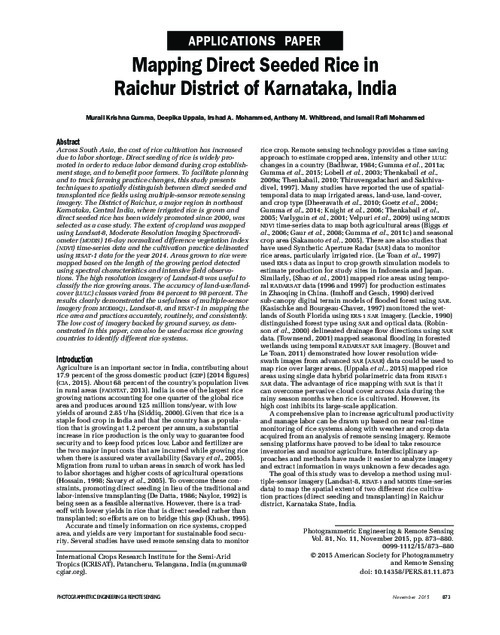Mapping Direct Seeded Rice in Raichur District of Karnataka, India
Abstract
Across South Asia, the cost of rice cultivation has increased
due to labor shortage. Direct seeding of rice is widely promoted
in order to reduce labor demand during crop establishment
stage, and to benefit poor farmers. To facilitate planning
and to track farming practice changes, this study presents
techniques to spatially distinguish between direct seeded and
transplanted rice fields using multiple-sensor remote sensing
imagery. The District of Raichur, a major region in northeast
Karnataka, Central India, where irrigated rice is grown and
direct seeded rice has been widely promoted since 2000, was
selected as a case study. The extent of cropland was mapped
using Landsat-8, Moderate Resolution Imaging Spectroradiometer
(MODIS) 16-day normalized difference vegetation index
(NDVI) time-series data and the cultivation practice delineated
using RISAT-1 data for the year 2014. Areas grown to rice were
mapped based on the length of the growing period detected
using spectral characteristics and intensive field observations.
The high resolution imagery of Landsat-8 was useful to
classify the rice growing areas. The accuracy of land-use/landcover
(LULC) classes varied from 84 percent to 98 percent. The
results clearly demonstrated the usefulness of multiple-sensor
imagery from MOD09Q1, Landsat-8, and RISAT-1 in mapping the
rice area and practices accurately, routinely, and consistently.
The low cost of imagery backed by ground survey, as demonstrated
in this paper, can also be used across rice growing
countries to identify different rice systems

